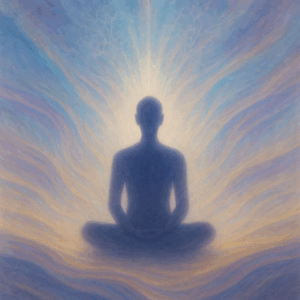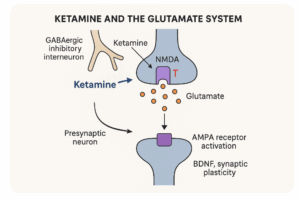
A Brief Guide to Psychedelic Therapy
Psychedelic-assisted therapy has been making headlines for its potential to help people heal from depression, anxiety, trauma, and other mental health challenges. While each medicine has its own unique properties, they all work by temporarily shifting the way your brain processes information, emotions, and memories — often allowing for new insights, emotional breakthroughs, and a deeper connection to yourself.
Below is a straightforward overview of four psychedelic medicines currently being studied or used in therapeutic settings: MDMA, LSD, psilocybin, and ketamine.
1. MDMA (3,4-methylenedioxymethamphetamine)
Known for: Enhancing feelings of safety, empathy, and openness.
How it works: MDMA increases serotonin, dopamine, and oxytocin — the “connection” and “trust” chemicals — while reducing activity in the amygdala (the brain’s fear center). This creates a calm, trusting state where painful memories can be revisited without overwhelming fear.
Therapeutic value: Particularly effective in trials for PTSD, especially when combined with psychotherapy. It helps people process traumatic memories while feeling supported and safe.
Contraindications: Not recommended for people with certain heart problems, uncontrolled high blood pressure, liver disease, or a history of psychosis. It can also be risky for people on certain antidepressants (SSRIs, MAOIs).
2. LSD (Lysergic acid diethylamide)
Known for: Powerful visual and sensory experiences, expanded awareness, and deep introspection.
How it works: LSD acts mainly on serotonin receptors, creating heightened sensory perception, altered thought patterns, and an expanded sense of meaning. The experience can last 8–12 hours.
Therapeutic value: Research shows potential benefits for depression, end-of-life anxiety, and addiction. In therapy, LSD can help people see life patterns from a new perspective, connect with a sense of purpose, and experience profound emotional release.
Contraindications: Not recommended for people with a personal or family history of schizophrenia, bipolar I disorder, or severe cardiovascular conditions. The long duration also makes it unsuitable for those unable to commit to extended sessions.
3. Psilocybin (magic mushrooms)
Known for: Mystical-type experiences, emotional breakthroughs, and a sense of unity or interconnectedness.
How it works: Psilocybin is converted in the body to psilocin, which binds to serotonin receptors, temporarily “loosening” rigid patterns of thinking and increasing communication between different brain networks. This often leads to a sense of expanded consciousness.
Therapeutic value: Studies show promise for depression (especially treatment-resistant cases), anxiety, and end-of-life distress. Many report lasting positive shifts in mood, openness, and life satisfaction.
Contraindications: Not recommended for people with active psychosis, bipolar I disorder, or certain heart conditions. Can cause temporary anxiety or confusion if not supported in a safe setting.
4. Ketamine
Known for: Short-acting dissociation from ordinary thinking, emotional relief, and rapid antidepressant effects.
How it works: Ketamine acts on the glutamate system rather than serotonin, creating a dissociative state where you may feel detached from your body and thoughts. This can help disrupt cycles of negative thinking. Effects last about 45–90 minutes.
Therapeutic value: Often used for treatment-resistant depression, acute suicidal thoughts, PTSD, and anxiety. Unlike the others listed, ketamine is already FDA-approved (as an anesthetic) and legally available for off-label therapeutic use.
Contraindications: Not suitable for uncontrolled high blood pressure, certain heart conditions, or people with a history of psychosis or substance misuse disorders involving dissociatives.

When ketamine blocks NMDA receptors on GABAergic inhibitory interneurons (these types of neurons act like brakes), the “brake” is released → excitatory neurons fire more → a surge of glutamate is released.
The extra glutamate activates AMPA receptors (another type of glutamate receptor) on postsynaptic neurons.
AMPA activation is crucial — it kicks off signaling pathways that increase brain plasticity.
AMPA signaling triggers a cascade (mTOR pathway) that increases brain-derived neurotrophic factor (BDNF).
BDNF promotes synaptogenesis — the growth of new synaptic connections — particularly in the prefrontal cortex.
This is thought to help “reset” dysfunctional brain circuits linked to depression, anxiety, and trauma.
Key Takeaways
Set and setting matter: The mindset you bring and the environment you’re in can shape the experience more than the drug itself.
Therapy is essential: The biggest benefits come when psychedelic sessions are combined with preparation and integration therapy.
Safety first: Always consult with a trained medical or therapeutic professional before using these substances, especially if you have medical conditions or take other medications. Make sure you feel safe with your practitioner. Don’t feel like you have to choose the first person you contact. Do your homework.
Not a magic bullet: Psychedelics can open the door, but the ongoing work of healing happens in daily life. Integration is key.

